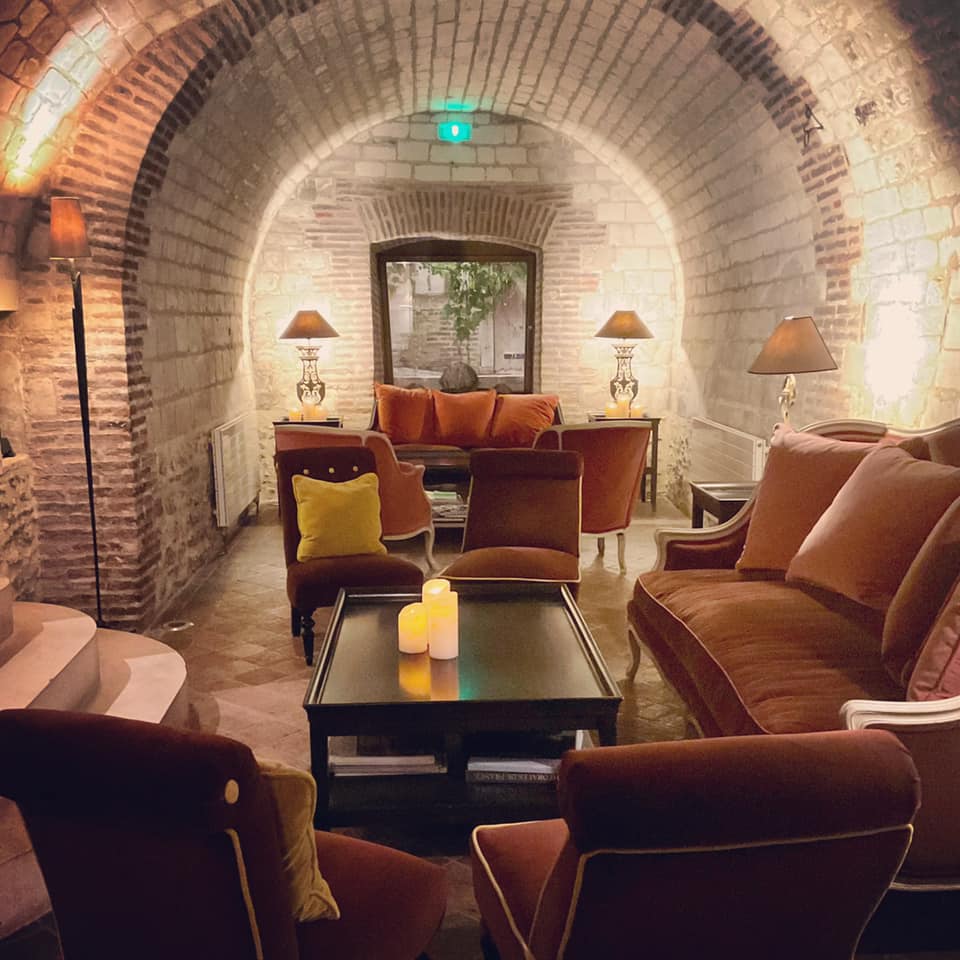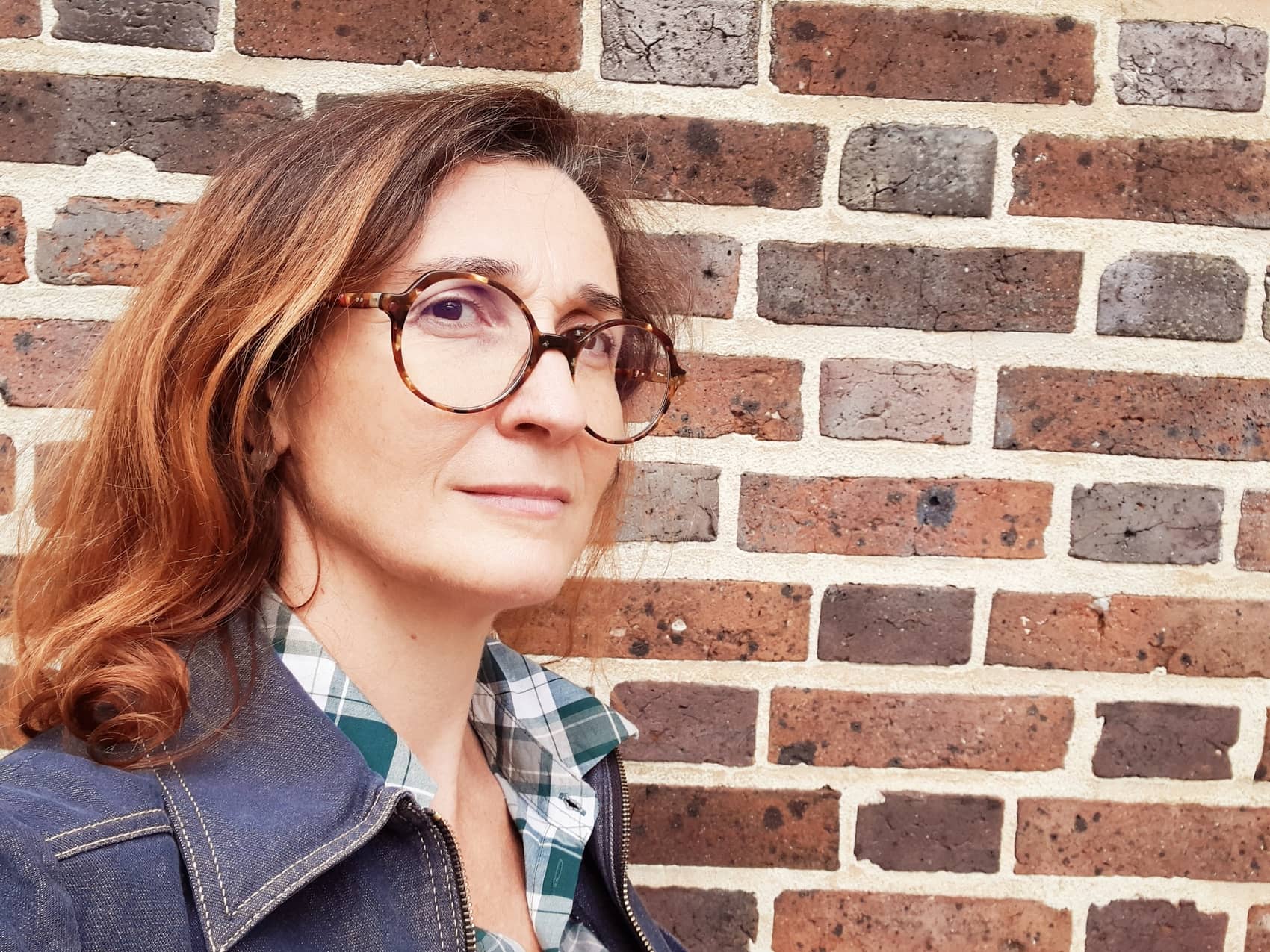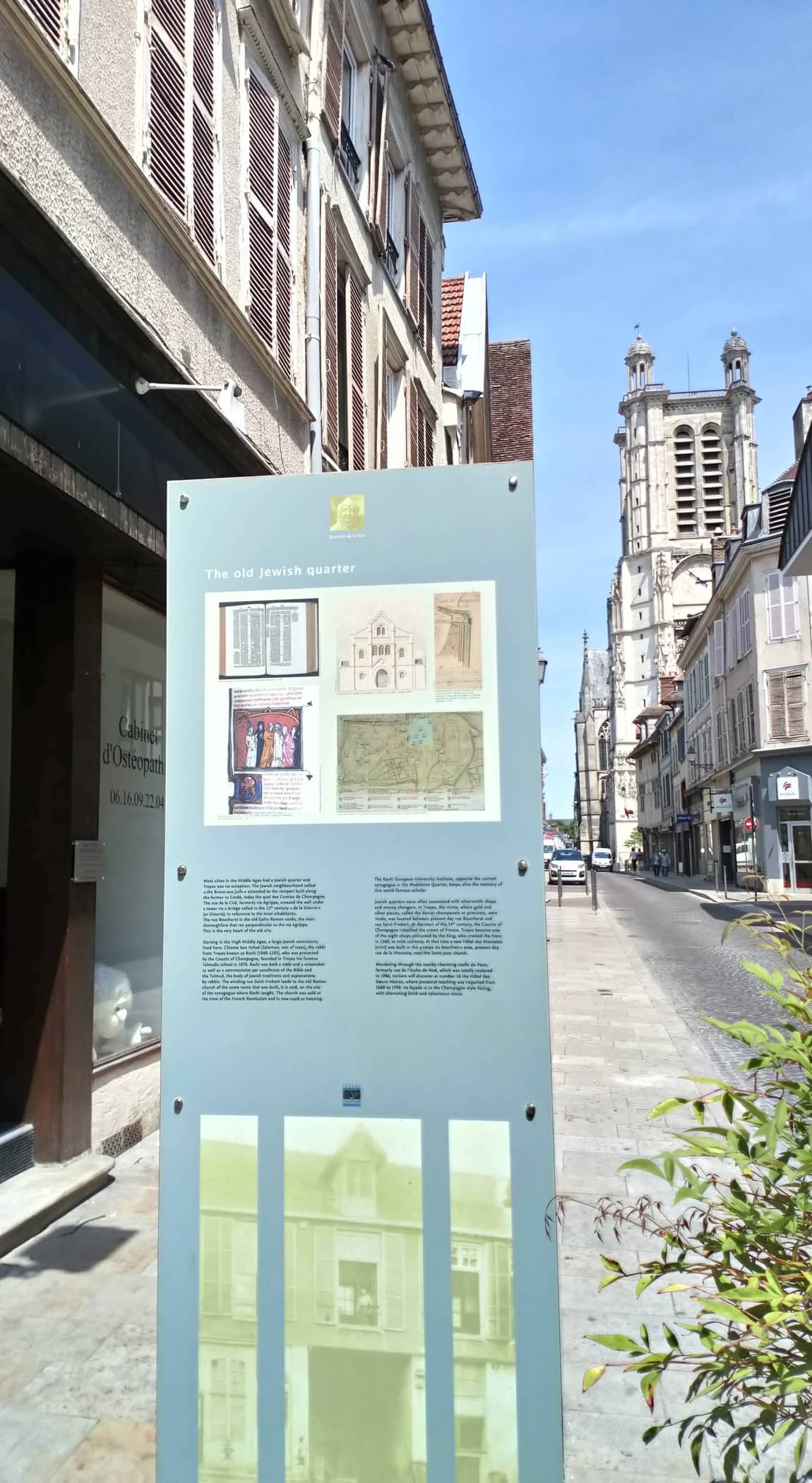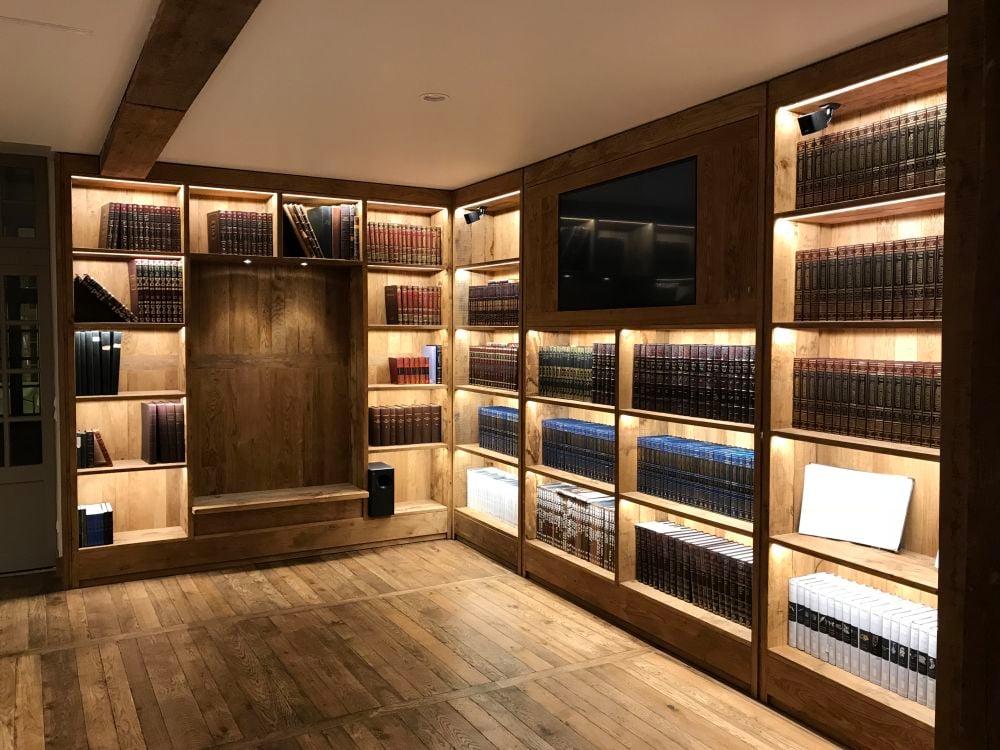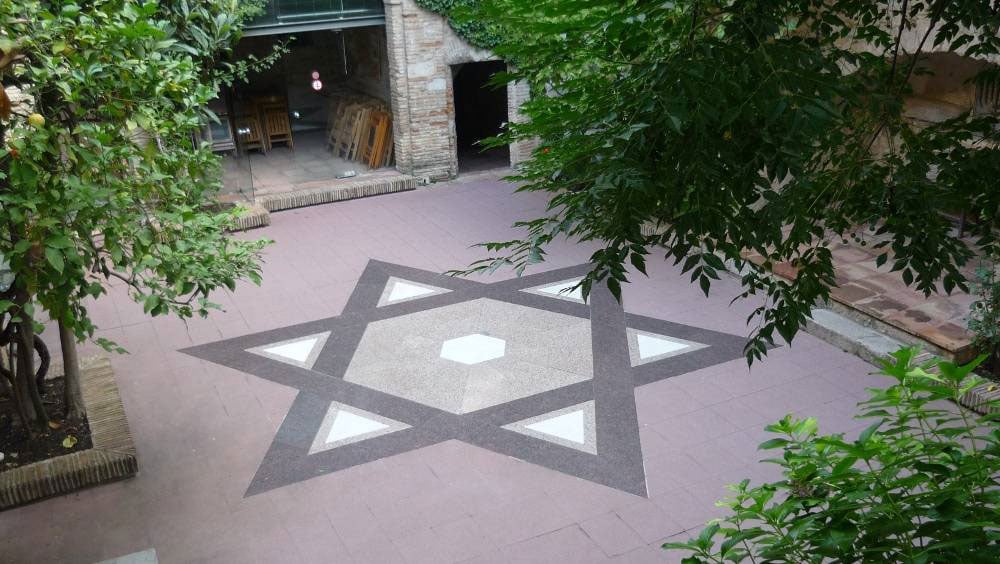Charming Hotel in Troyes in a unique setting and a building dating from the XV and XVI century.
Archives: Directory listings
Directory listings
Delphine Yagüe CulturistiQ
Meetings, guided tours or workshops about a specific theme for a 1h30 to 2 hours experience, in a pedagogical and entertaining setting, for group up to 20 persons. Those experiences are built jointly by CulturistiQ and its partners: each partner presents the specificities of its work and heritage while CulturistiQ presents the same thematic through the point of view of Rashi and his disciples. As the writings of the Sages of Champagne are wonderful testimonies of daily life in the Middle Ages in Champagne, it is easy to transmit the local medieval way of life through their description of tools and technics, relationships between Jews and Christians, food, agriculture, nature and so on… All through the “experience”, CulturistiQ and its partners offer a dialogue between elements of local culture and Jewish local history/Jewish culture.
The Jewish Story of Troyes, France
©Texts by Troyes la Champagne Tourisme – ©Rashi Route information by CulturistiQ. Troyes La Champagne, capital of the department of Aube, is a unique destination to explore once and again, 160 kilometers south-east of Paris and 120 kilometers from Reims. First on the list of things to see, is the fabulous collection of half-timbered houses which makes the town proud. They have received a glorious facelift, adorning them in a multitude of colours. Water, on which the town was established, has also taken centre stage again. The quays of the Seine are an eloquent testimony to this. Before winding through Paris, the river passes through the former capital of the Champagne counts, where it is infused with the spirit of moderation.
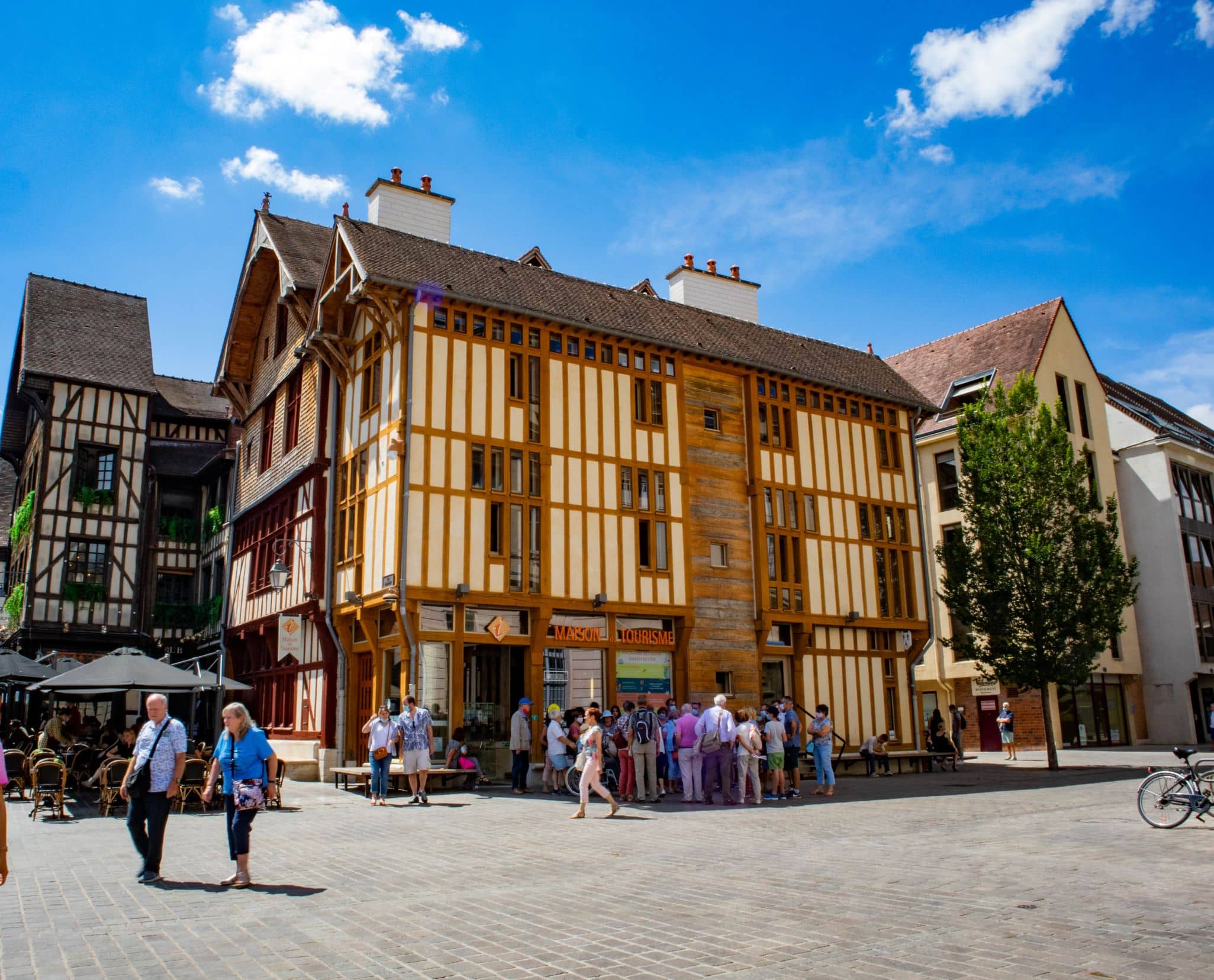
The venerable town of Troyes dates back to antiquity. The region was populated by nomads during the lower Palaeolithic period, around 400,000 BC, and was settled around 5,000 BC. The first traces of permanent settlements date from the end of the 6th century AD. Greek and Latin authors wrote of the Gallic people Tricasses around the 5th and 4th centuries BC. It is estimated that in the first centuries AD, the city of Augustobona Tricassium (Troyes) had around 6,000 souls and a surface area of around 80 hectares, bordered on the north and south by marshes.
In the 12th century, Troyes experienced rapid commercial and financial expansion, as well as an incredible intellectual and cultural explosion. The Counts of Champagne helped the city to expand by stimulating the celebrated “Foires de Champagne” that attracted traders from around Europe, thanks in part to the fairs’ code of conduct, set up in 1137. In the time of the Counts of Champagne, while Troyes is famous for Chrétien de Troyes, it is also associated with two other key figures from the Middle Ages: Rashi and Saint Bernard de Clairvaux, whose names remain indelibly linked to the city of Troyes and the Aube département to this day. Both men were eminent thinkers and scholars who played a key role in their respective eras. At this time, Troyes was home to a large Jewish community. One of the city’s children would go on to become the world’s most famous Jew and an iconic figure in Judaism: Shlomo Ben Yitzhak, better known as Rashi (1040-1105).
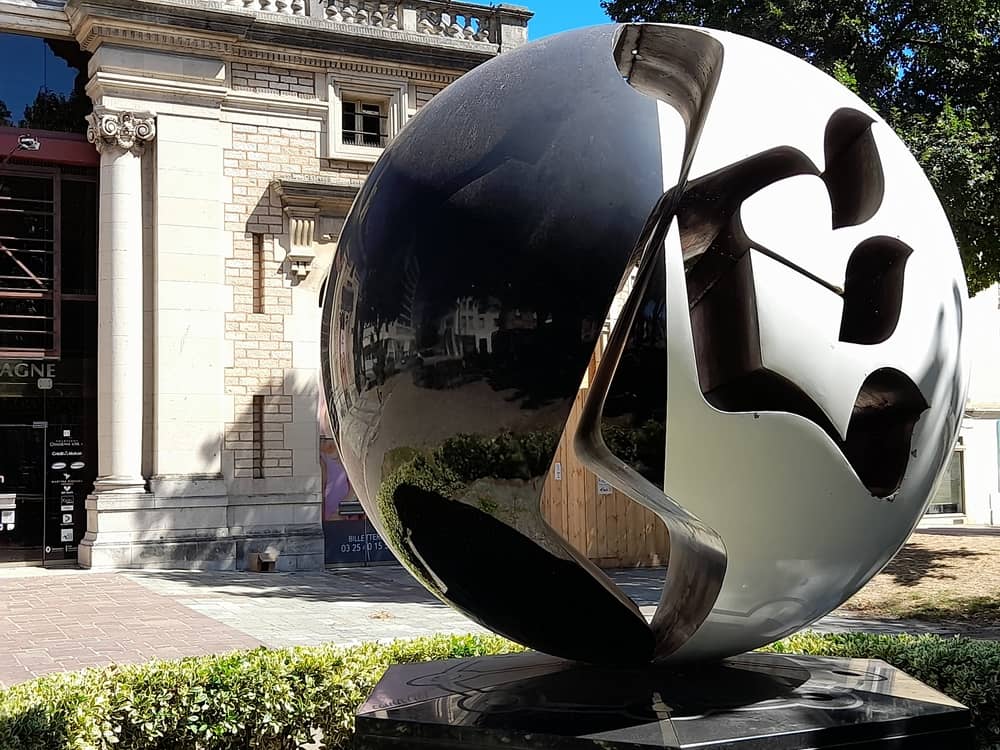
The famous Troyen is best known for his extraordinary talent as an interpreter and commentator of the Bible and the Talmud. He founded a Talmudic School in his native city, which attracted students from far and wide, keen to learn more about his comments on the sacred texts. His teachings remain influential today, representing a model of openness and dialogue between cultures. Rashi’s works also provide an important insight into the French language during his era (the second half of the 11th century), when French remained a variant of the ancient Champenois dialect and was still in its infancy. The Rabbi translated difficult and technical terms from Biblical Hebrew into this burgeoning language. Just like Chrétien de Troyes, Rashi made a major contribution to the expansion of French-language literature in the central Middle Ages.
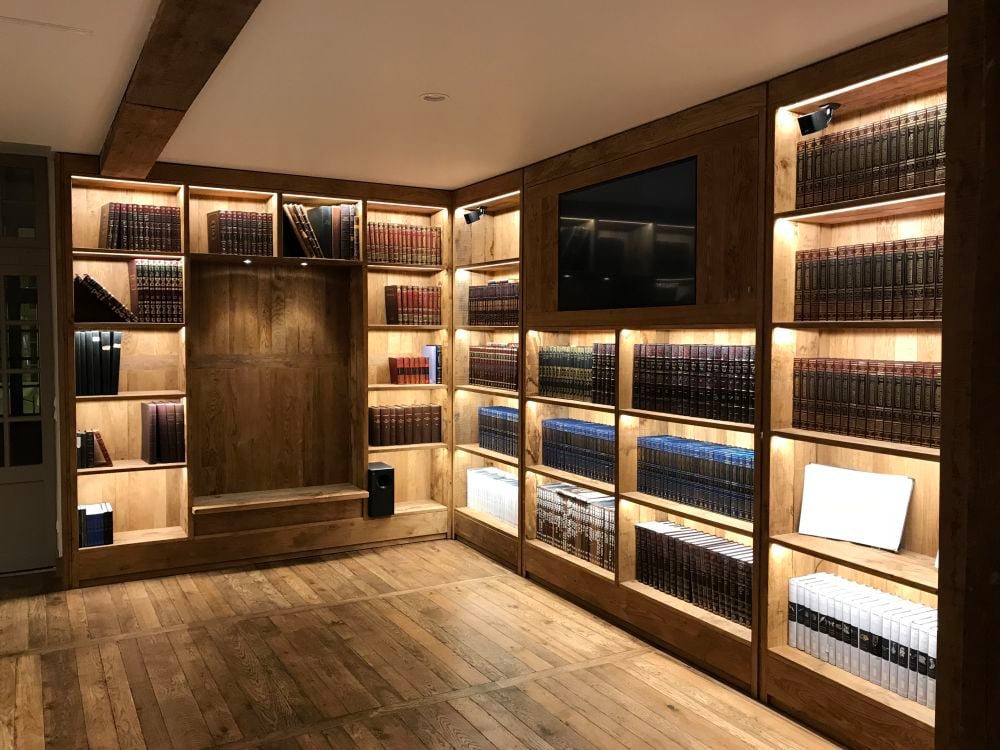
Later, in the 16th century, the city was an artistic hotbed. Troyes is largely a 16th century city, with most of today’s buildings and layout dating from what locals call the “beautiful 16th century”. A reference to a prosperous period in the city’s history, when Troyes was a melting pot of artistic talent and creativity in fields as varied as sculpture, painting, tapestry, embroidery, goldsmithery and glasswork. Arts flourished with the famous Troyes Schools of Sculpture and Painting or the Master Glassmakers school. Their talent, already recognized in the 13th century, were to create marvelous works and make Troyes a “blessed town of stained glass”.
The saying goes that France is home to 80% of the world’s stained glass windows, that 80% of French stained glass windows are located north of the Loire, that 80% of the stained glass windows north of the Loire are in the Champagne region, and that 80% of the stained glass windows in the Champagne region are in the Aube département! A quick calculation would therefore suggest that around 40% of the planet’s stained glass windows can be found right here in Aube… Nowhere else in the world will you find the sheer number and quality of stained glass windows as you can here. Aube is home to some 9,000 sq. m of stained glass windows, from the majestic Troyes cathedral to the smallest village church! This priceless treasure is spread across some 200 religious buildings. No fewer than 1,042 listed windows come from the era known locally as the «beautiful 16th century» alone.
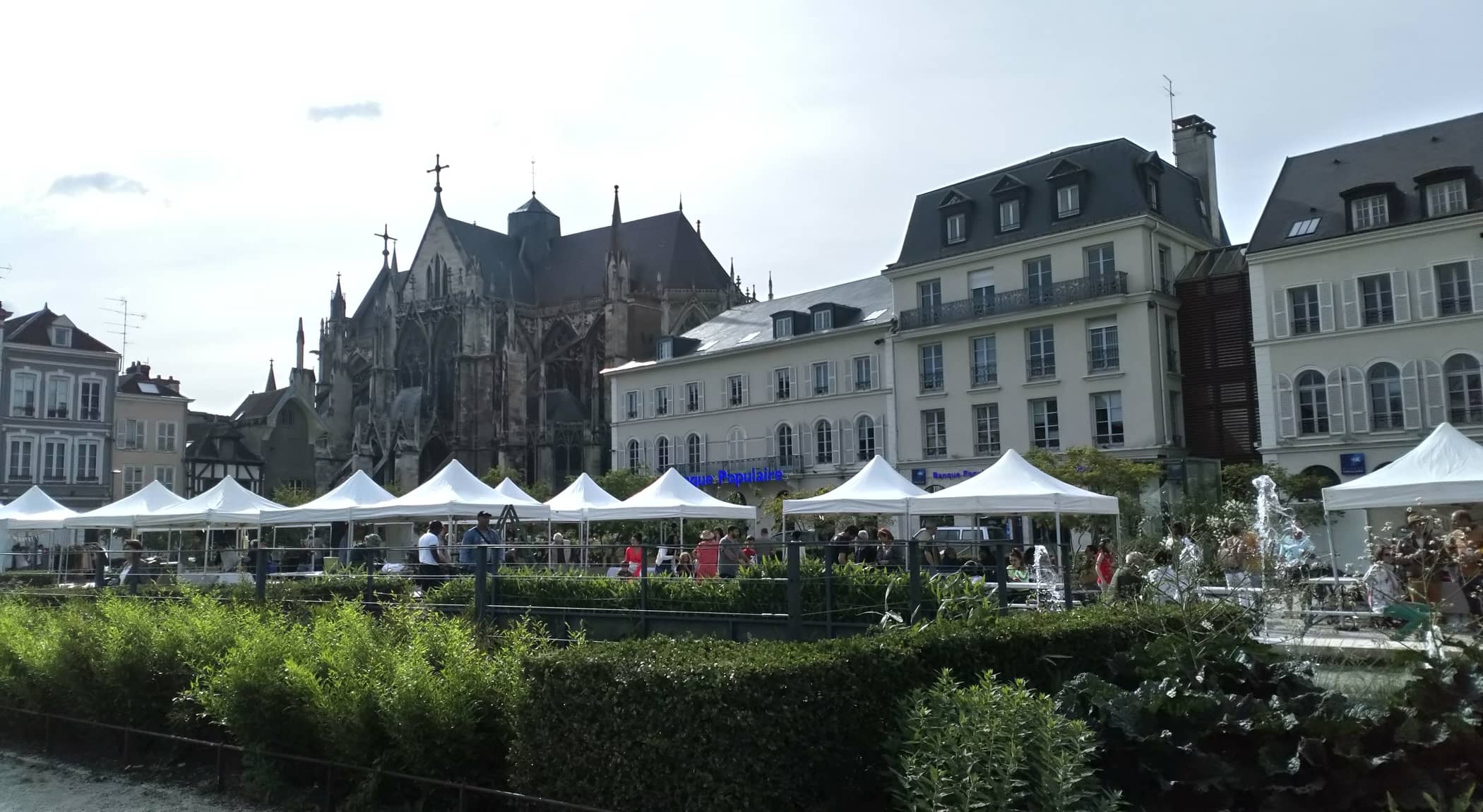
Troyes is also famous for its Renaissance mansions, opulent residences built in the Renaissance period: Hôtel Juvénal des Ursins, Hôtel Marisy, Hôtel Mauroy, Hôtel du Petit Louvre, Hôtel du Moïse, Hôtel des Angoiselles, Hôtel de Chapelaines, Hôtel de Vauluisant, Hôtel du Commandeur….
This pivotal era, spanning both the Middle Ages and the Renaissance, has left a lasting legacy on Troyes as it is today. The city was ravaged by a great fire in 1524, but has been rebuilt to its original appearance, with buildings replacing their fire-damaged predecessors in exactly the same locations.
The 19th century saw Troyes undergo an economic and industrial transformation, driven by the hosiery industry. The “factory shops” were born in TROYES in the 1960s, to sell off local manufacturers’ ends of lines. At first only open to factory staff, little by little they were opened to the general public. Let’s remind ourselves of some of Troyes great brands such as Lacoste, Doré Doré or Petit Bateau!
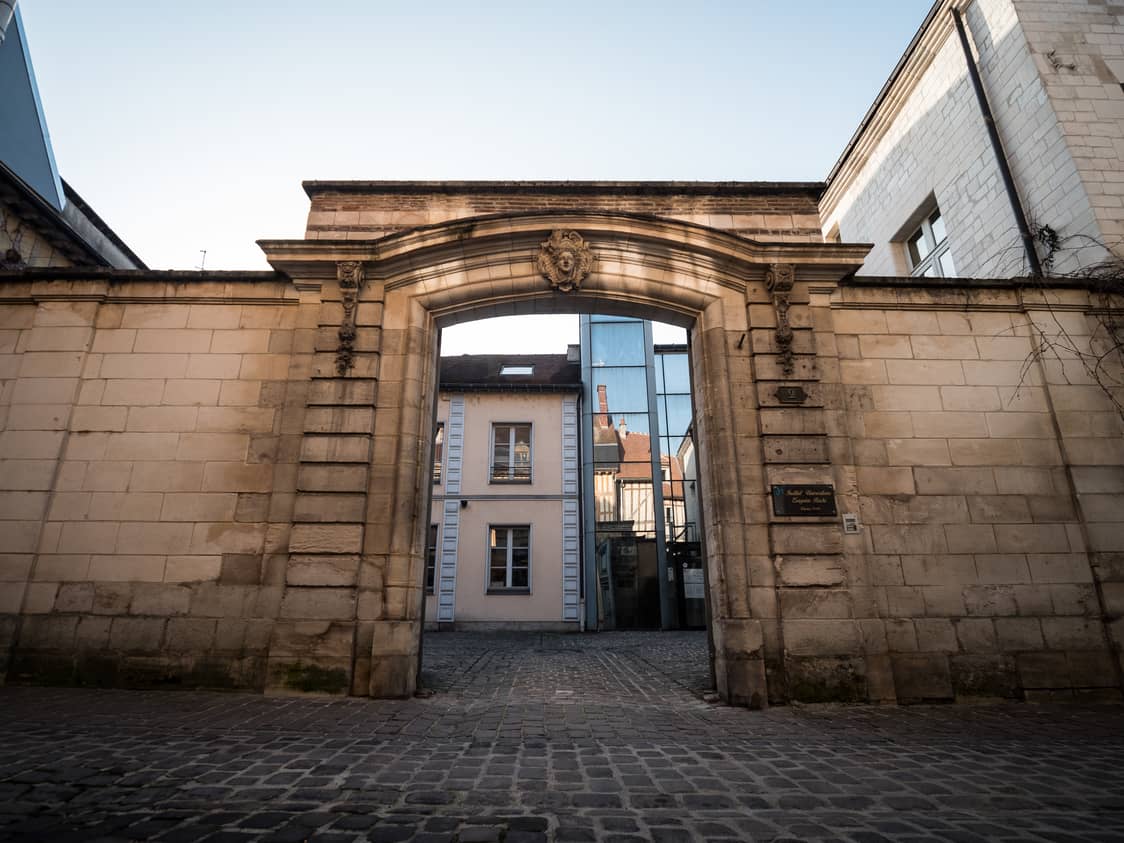
This legacy has bestowed upon Troyes its unique identity.
Today, the town is undergoing a significant transformation which began in 1970. This slow and patient restoration programme of the town’s heritage sites is coupled with the evolution of its economy. The modern city is a direct descendant of its medieval predecessor. This venerable city is now living through its fourth golden age. Troyes La Champagne is also full of historical and architectural gems. Explore and get astonished through its museum collections: History, Fine Arts, Modern Art, Hosiery, Apothecary, Archeology, Arts and popular traditions.
The town is on a human scale, and the countryside is never far! Troyes Champagne Métropole now welcomes visitors passing through with pleasure. Troyes and its surroundings also benefit from multiple little greenery spots that are like many places where you can take a breath besides the frantic race of everyday life. The landscape reflects the local style, unless it is the other way around: modest in height, moderate in area, and accessible to all.
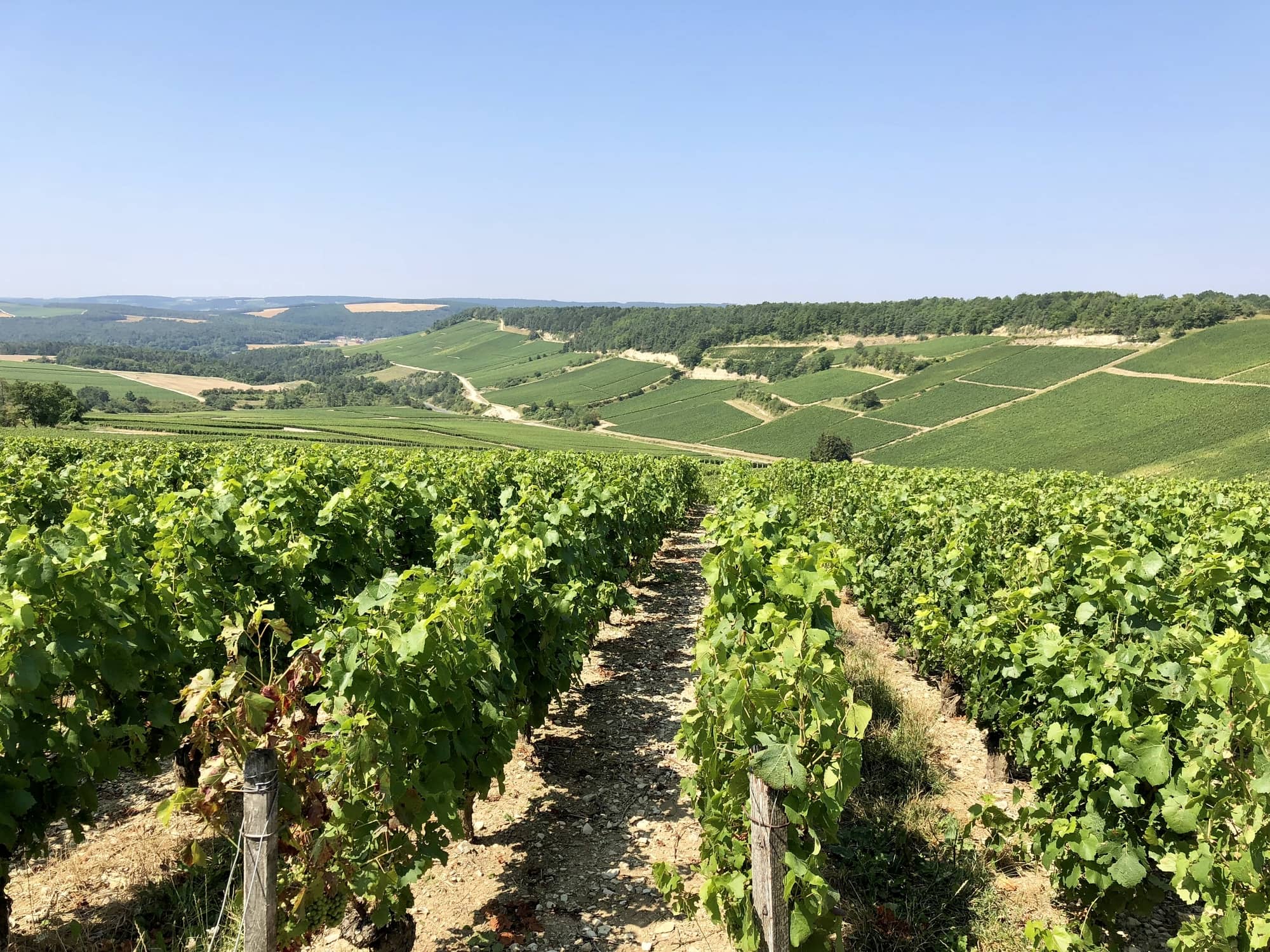
Then there are the Champagne plains with endless farmland, the Grands Lacs de Champagne and the viticultural island of Montgueux, which surround the town. Or the completely different valleys of the Pays d’Othe, home to the vast and truly enchanting Chaource forest. The modest surroundings are a treasure chest for those who know where to look. In Troyes, Historic Capital of Champagne, the nearest vineyard is about ten kilometres away (Montgueux), so it would be a sacrilege to talk of gastronomy without mentioning the famous sparkling nectar of the region, Champagne! It is not well known that the Aube is the 2nd largest producing département of five of Champagne, after the Marne. The actual Champagne appellation vineyards planted and in production cover 6,500 hectares and supply a fifth of the production, with a potential of 50 million bottles, of which 6,3000,000 are produced by winegrowers and winemakers of the Aube. The 59 communes of the appellation are for the most part concentrated in the south of the département the length of the “Cotes des Bar” (from the Celtic “Bar”, meaning peak), between Bar-sur-Seine and Bar-sur-Aube, with a prolongation onto the slopes of Montgueux that overlook Troyes and, and to the northwest near Villenaxe-la-Grande. The Champagne Tourist Route has its own signposting system and the winegrowers there are ready with their welcome.
In that context, since 2019 Aube département has become part of the Cultural Routes of the Council of Europe, which includes the Route of Jewish Heritage, as the cradle of a universally known recognized intangible Jewish heritage. In Aube département, the Rashi medieval Route of Champagne crosses two other prestigious European Routes: the Templars Route and the Cistercian Abbeys Route. To invigorate the territory, the Rashi Route proposes a combination of a cultural and tourist offering centered on the history of the ancient prestigious Jewish communities of Champagne.
Raymond Moretti’s sculpture for Rashi
The Rashi Memorial created by the sculptor Raymond Moretti was inaugurated in 1990, 950th anniversary of Rashi’s birth, on the occasion of the opening of the Rashi University Institute. This large sphere, 2.20m in diameter by 2.80m in height, faces the Champagne theater, close to the former Jewish cemetery where Rashi was buried. The monument rests on a hexagonal granite plinth which represents France. This black and white sculpture symbolises contrasts and presents in cutout, the acronym of Rashi. It was officially unveiled by Nobel Peace Prize winner Elie Wiesel.
The Troyes Tourism Office
Troyes Tourism Office tour takes you to Saint Frobert district, the Old Jewish quarter of Troyes. It gathers the streets St Frobert, Hennequin, du Paon, Audiffred, Cordeliers, Boucherat. The rue Saint-Frobert and the current district are named after the old church which is said to have been built on the site of a synagogue where Rashi is said to have taught. The rue du Paon probably housed his home. In the Middle Ages, the neighbourhood was known as the “Broce aux Juifs” which referred to the brushwood in the area, situated close to the countryside. In the 11th century, this area was home to several jewish families including Rachi. The Jewish community of Troyes was able to develop thanks to the protection granted to them by the counts of Champagne from the 11televenth to the 13th century between the reign of Thibault II and Thibault IV. If Jewish families gathered in this neighborhood nothing distinguished them from the rest of the population. It was not until 1215 that the Church forced them to wear a distinctive sign on their clothes in the form of a piece of yellow cloth called a wheel (Rouelle). Rashi died at age 65 on July 13, 1105. Buried in Troyes with full honours in the former jewish cemetery, situated in the area of Moretti’s sculpture, outside the walls of the medieval city, next to the Porte de la Girouarde today disapeared (located at the time at the crossroads of Quai Dampierre and Rue de la Cité). The cemetery was demolished in the 16th century to enlarge the city and his grave disapeared.
The Rashi European University Institute
The Rashi European University Institute is an institution of higher education, open to all, devoted to Jewish and Semitic studies and research on monotheistic religions. In the spirit of the exegete Rashi, the Institute opens Judaism to the world, in all its diversity. Classes, debate evenings, and conferences hosted throughout the year provide paths of reflection centered on religious study and on the dialogue between cultures and religions.
The exhibition “Rashi and the Jews in Medieval Times in Europe”, inaugurated in 2005 by Troyes’ Jacques Chirac public Library to commemorate the 900th anniversary of Rashi’s death, is also open to visitors (under registration).
Old Jewish Quarter
Saint Frobert is the Old Jewish quarter of Troyes. It gathers the streets St Frobert, Hennequin, du Paon, Audiffred, Cordeliers, Boucherat. The rue Saint-Frobert and the current district are named after the old church which is said to have been built on the site of a synagogue where Rashi is said to have taught. The rue du Paon probably housed his home. In the Middle Ages, the neighbourhood was known as the “Broce aux Juifs” which referred to the brushwood in the area, situated close to the countryside. In the 11th century, this area was home to several jewish families including Rachi. The Jewish community of Troyes was able to develop thanks to the protection granted to them by the counts of Champagne from the 11televenth to the 13th century between the reign of Thibault II and Thibault IV. If Jewish families gathered in this neighborhood nothing distinguished them from the rest of the population. It was not until 1215 that the Church forced them to wear a distinctive sign on their clothes in the form of a piece of yellow cloth called a wheel (Rouelle). Rashi died at age 65 on July 13, 1105. Buried in Troyes with full honours in the former jewish cemetery, situated in the area of Moretti’s sculpture, outside the walls of the medieval city, next to the Porte de la Girouarde today disapeared (located at the time at the crossroads of Quai Dampierre and Rue de la Cité). The cemetery was demolished in the 16th century to enlarge the city and his grave disapeared.
Troyes Synagogue and Rashi’s House Exhibition
In 2016, an extraordinary project was born, hosted in the Troyes Synagogue: providing a “house” for Rashi in his native town, set inside a typical 17th-century Champagne-style background. After four years of work, the results of the synagogue’s restoration are exceptional: visitors are invited to pray under the splendid glass roof of the sanctuary, wander amidst a 2000-square-meter labyrinth of courtyards, halls and cellars and learn about the adventure of this reconstruction. The synagogue of Troyes also invites visitors to immerse themselves in Rashi’s universe, through an ambitious exhibition titled “Rashi’s House”, in which visitors can discover Rashi and his work, thanks to an immersive and innovative digital scenography. This exhibition shares the story of Rashi and his disciples, who were able to transmit the soul of French Judaism far beyond the borders of the Champagne area, influencing rabbinical literature far beyond the 13th century, end of the Tossafists era in Champagne. A recreated oratory and bet hamidrash (study hall) immerse visitors in the medieval Troyes of Rashi. Visitors are also invited to study Rashi’s commentaries on digital devices, creating an innovative interactive experience.
Spain’s Top 10 Must See Jewish Quarters
Whether you’re out sun-seeking or sightseeing, Spain has more to offer than just good food and good weather. Home to the original ‘Sephardim’ (‘Spanish Jews’ in Hebrew), Spain is rich with stories and evidence of its Jewish population’s history and culture, right up to the community’s 1492 Expulsion. So wherever you find yourself roaming the country or exploring the city, there’s always something new and unexpected to discover: synagogues built like mosques and converted to churches or statues of Jewish celebrities, Spain has it all, with some breathtakingly beautiful views.
Barcelona
Barcelona – city of Dali, Gaudi and good food. But did you know that Barcelona’s ‘Aljama’, the Jewish community, was one of the largest of medieval Spain, comprising 10% of the city’s population? After the 1391 attack on the city and 1492 expulsion, all that’s left of Barcelona’s magnificent Jewish heritage is the layout of its streets. For some light-hearted relief, the Barcelona Jewish film festival and European Day of Jewish Culture celebrations take place in the city on the first Sunday of September. And of course, check out the Jewish Call!
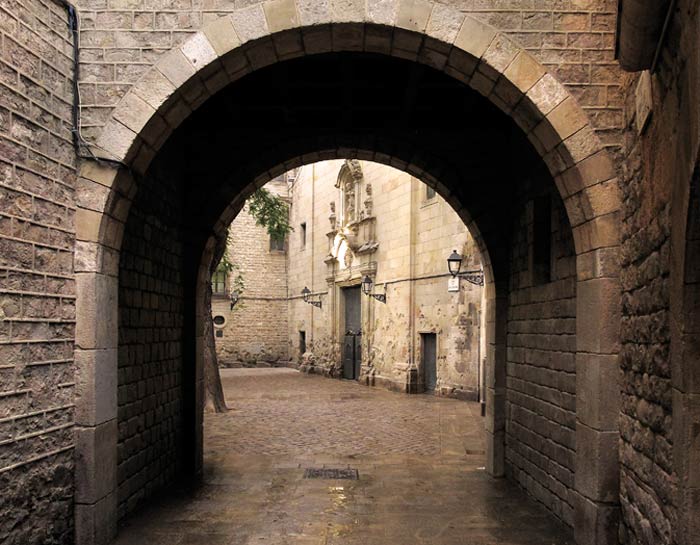
Girona – Catalan Jewish Museum, the Centre Bonastruc ça Porta
And now to Spain’s very far East – Girona. Girona’s beauty – the hilly Capuchins to the east of the river Onyar; the modern town on the plains of the west – is breathtaking and varied. Nowadays, Girona is a popular day trip for tourists from Barcelona. Its Jewish past, dating from the late 9th century, isn’t completely obvious at first glance; for that, you have to dig a little deeper. Take a visit to the Jewish Museum of Girona, within the boundaries of the Jewish ‘Call’ (quarter) and the site of Girona’s last synagogue–details all areas of medieval Spanish-Jewish life, including the most famous Jewish Gironan of all, the celebrated Talmudist Nahmanides.
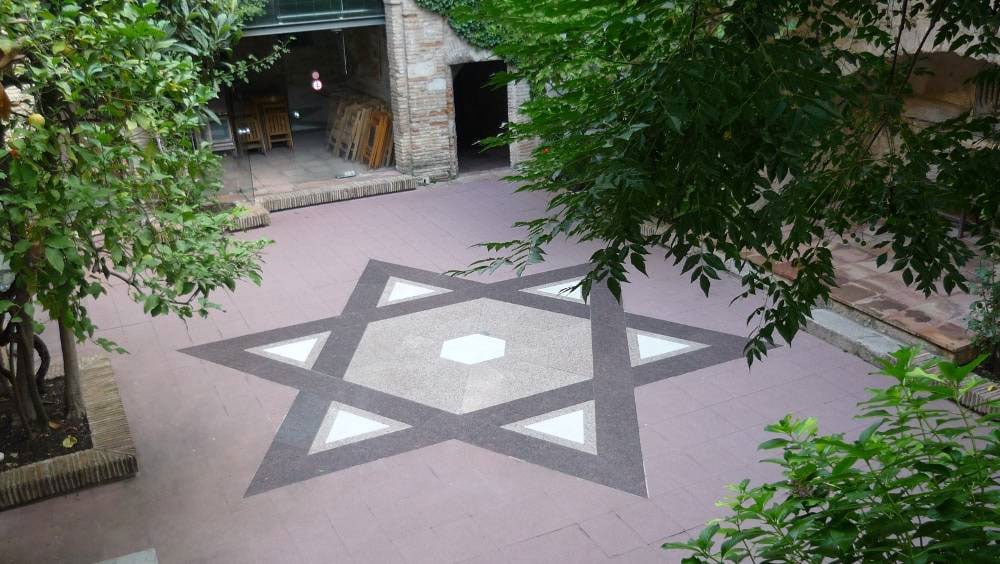
Toledo
Toledo, close to Madrid, is the city of walls, silk, and swords and one of the most important Jewish cities of medieval Europe. Other than the famous ‘Escuela de Traductores’ (School of Translators), the Jewish quarter (‘Juderia’)’s two remaining synagogues (out of Toldeo’s original ten) are unmissable. The Sinagoga del Transito is a two-in-one attraction – built in 1366, nowadays it contains the Sephardic Museum of Toledo, detailing medieval Jewish life in Toledo. The Santa María la Blanca Synagogue also has an interesting story – permission to build it was granted when the King was in love with a Jewish woman. It was later converted into a church. The path of true love never did run smooth…
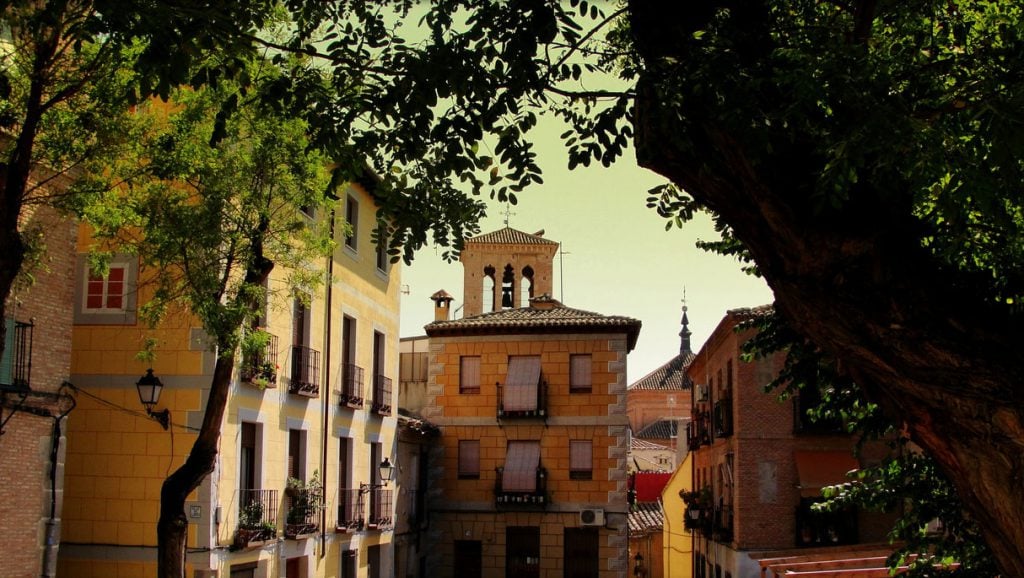
Segovia
The undulated shape and seven gates of the Segovian Jewish quarter set it apart from the rest of the city. Segovia’s Jewish history is what might best be termed ‘hidden’. There’s a hotel (the Hotel Casa Mudejar) on the site of a famed converso rabbi’s house. Large arches stand, without their gates. Where there were once three synagogues, two dedicated Talmud schools, a Jewish hospital, cemetery, butcher, and baths, there are now a collection of generic buildings with some lovely scenery and views – the community was forced to liquidate their assets at the time of the expulsion. Happily, within the quarter is the Jewish Quarter Educational Center, which is also the former home of an illustrious descendant of converted Jews.
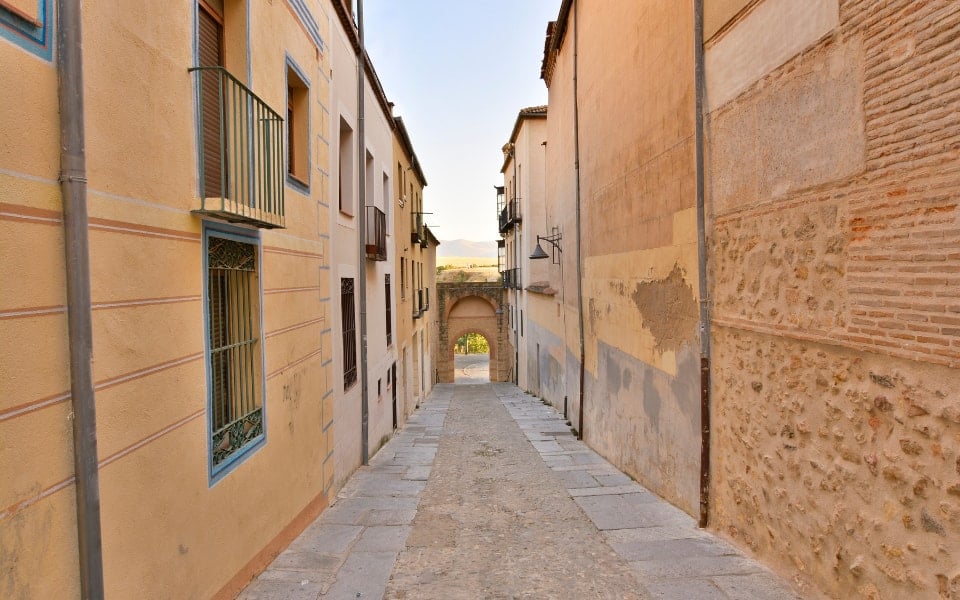
Oviedo– Asturias.
Known as the ‘Capital of Paradise’, unfortunately, nothing original of Oviedo’s Jewish heritage remains in the old Jewish quarter. The city is, however, skilled at commemorating what used to be there. There are many things to ‘not’ see in Oviedo: wander over to the Campoamor Theatre and look for ghosts –below your feet is what used to be the Jewish cemetery, memorialized by a plaque on the side of the theatre. In Juan XXIII Square, a lonely plaque on a pharmacy tells readers that they are in the historic Jewish quarter. Most excitingly, perhaps, just east of the theatre is the commemorative statue of Woody Allen. Yes, you’ve read that correctly. And no, we don’t see the connection either.
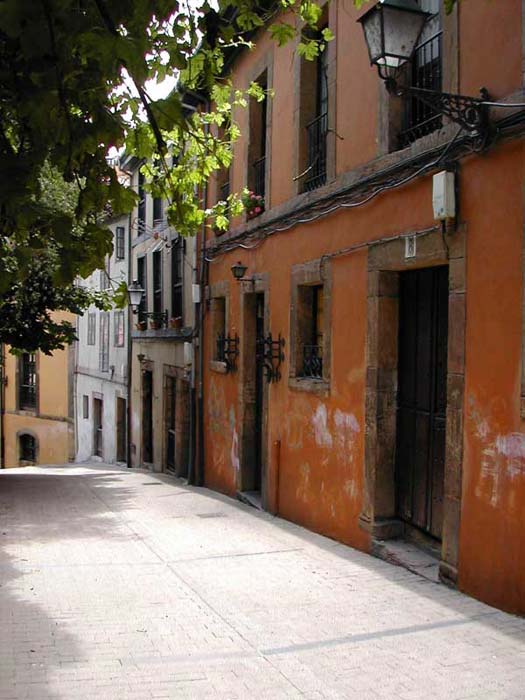
Cordoba
The city of Cordoba plays a pivotal role in the history of Jewish scholarship in Spain. Its achievements made it one of the most known centers of Talmud in the Jewish world. During the 10th century, Cordoba’s Jewish community was as wealthy as it was learned. Of course, like many other Medieval Jewish communities, the Jews of Cordoba lived in their own quarter known as the Juderia. What remains of the Jewish people of Cordoba is a far cry from the once great community that existed during its heyday. However, the city has made a distinct effort to conserve what has managed to remain. In 1985, the Great Synagogue on Calle de los Judios was recognized as a national heritage site. Be sure to visit Maimónides Square in the heart of the Jewish Quarter, as well as the Sefarad House, a cultural centre dedicated to the interpretation and promotion of Sephardi heritage
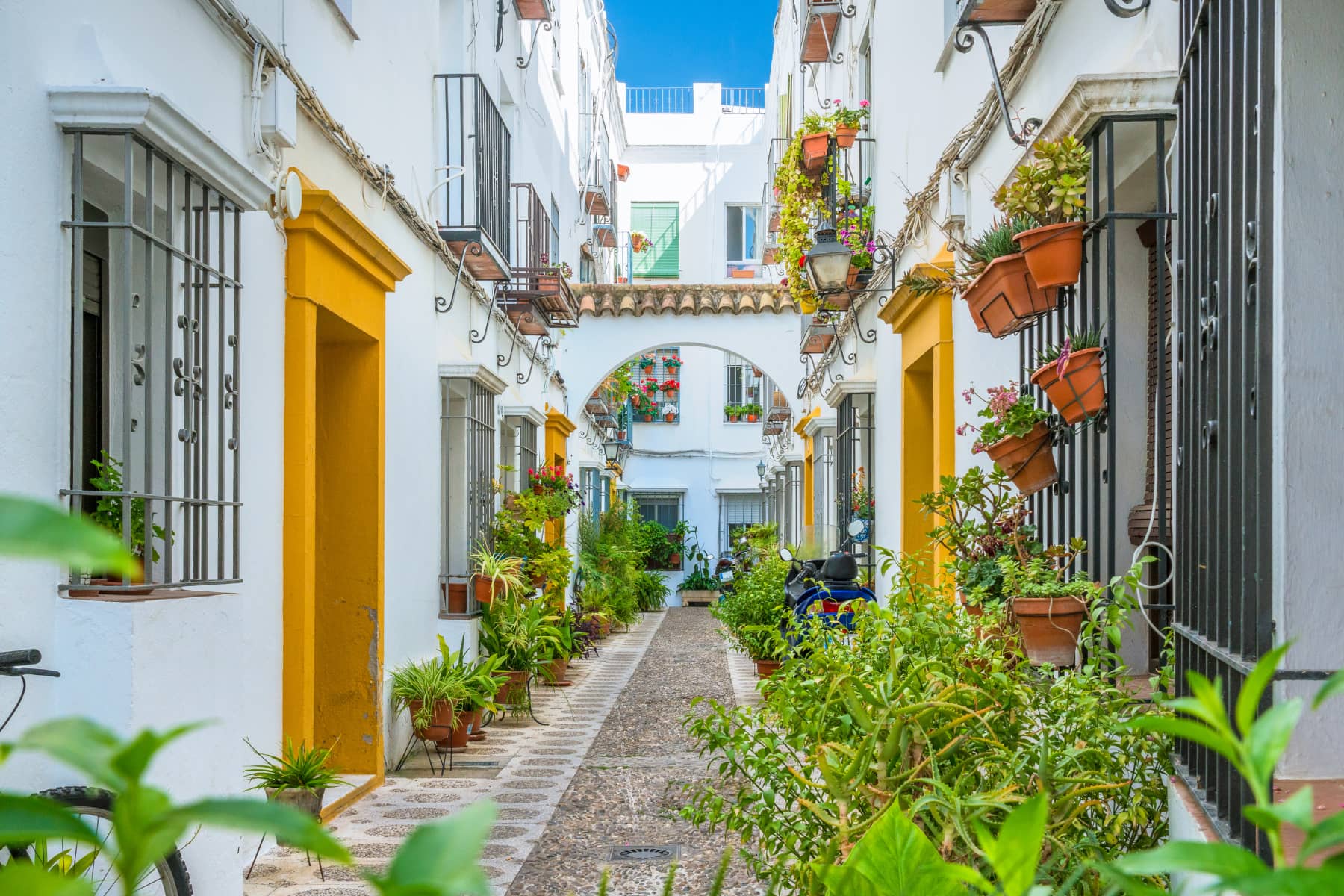
Seville
The history of Jews in Seville goes all the way back to the days of King David and the First Temple. In fact, some of the more prominent Spanish Jewish families of Seville claim to be descendants of the great king. The Jewish community of Seville was one of four major communities during Spain’s period of Muslim rule. They served in every facet of society from the common street vendor and merchant all the way to the members of the high court. Seville was an exception to the rule in almost every way for Jewish life. After the Christians reclaimed Spain, they built a second larger Jewish quarter that ran all the way from the Carmona Gate to the city wall. At one time it housed Spain’s largest Jewish community. This quarter is now known today as the Barrio de Santa Cruz and contains the Al-Andalus House of Memory at its center, as well as the Jewish Interpretation Center.
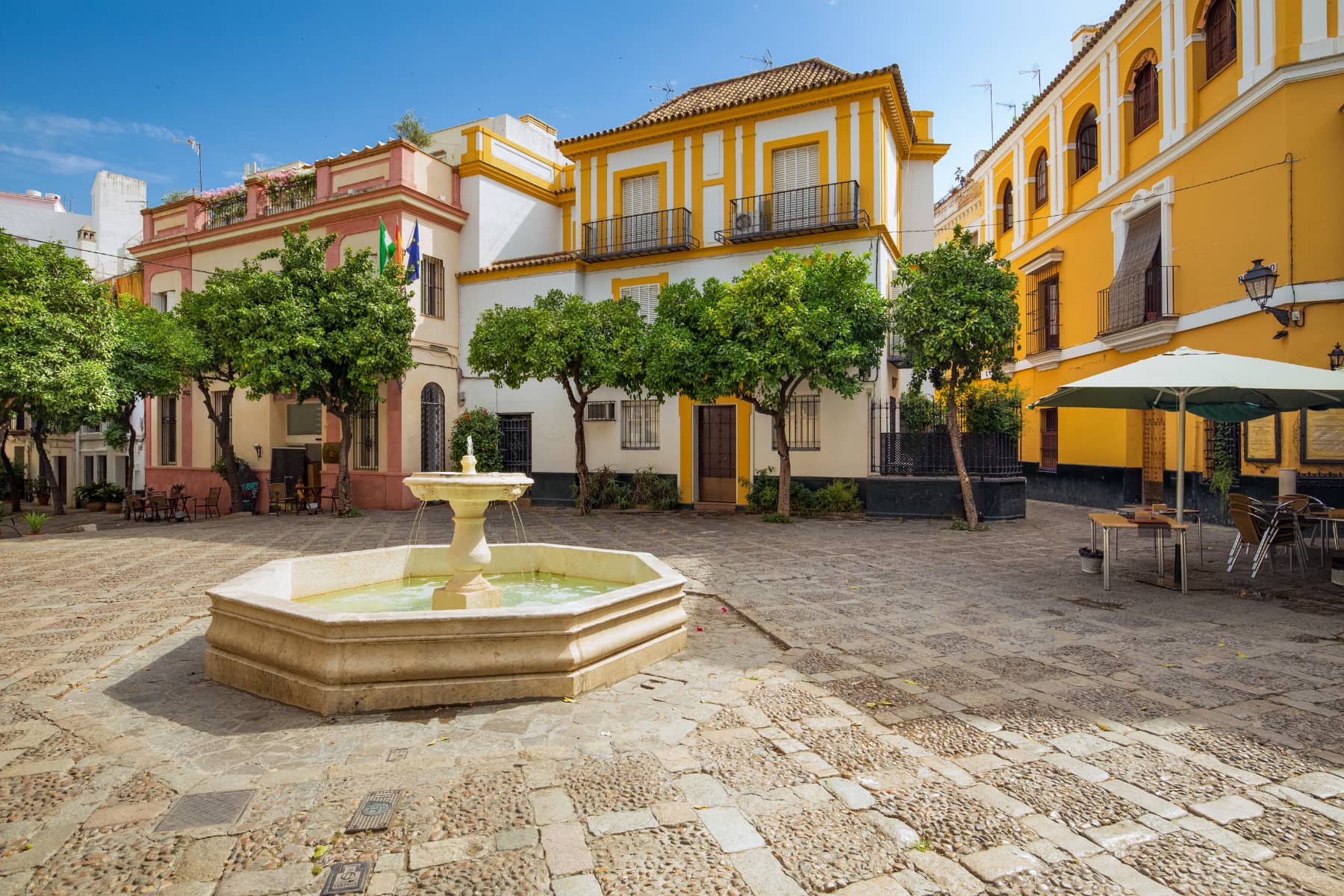
Palma
Located in the Southwest of Mallorca, the port city of Palma has an extensive and well-known Jewish history. The Palma Jewish Quarter tells the story of both a thriving and persecuted community. Specifically pertaining to the history of Conversos and a major massacre that occurred there in 1391. There are traces of all this and more within the narrow alleyways and high walls of the former Jewish quarter. Secret synagogues and hidden Hebrew letters are etched into the stone. Today, a population known as Chuetas, the descendants of medieval Palma Jewry, is working to conserve and revive the history of the Jews of Mallorca almost 600 years later. They have a new synagogue and Jewish community center and several preserved historic sites, such as the Tower of Love, that tell the story of Palma’s Jewish past.
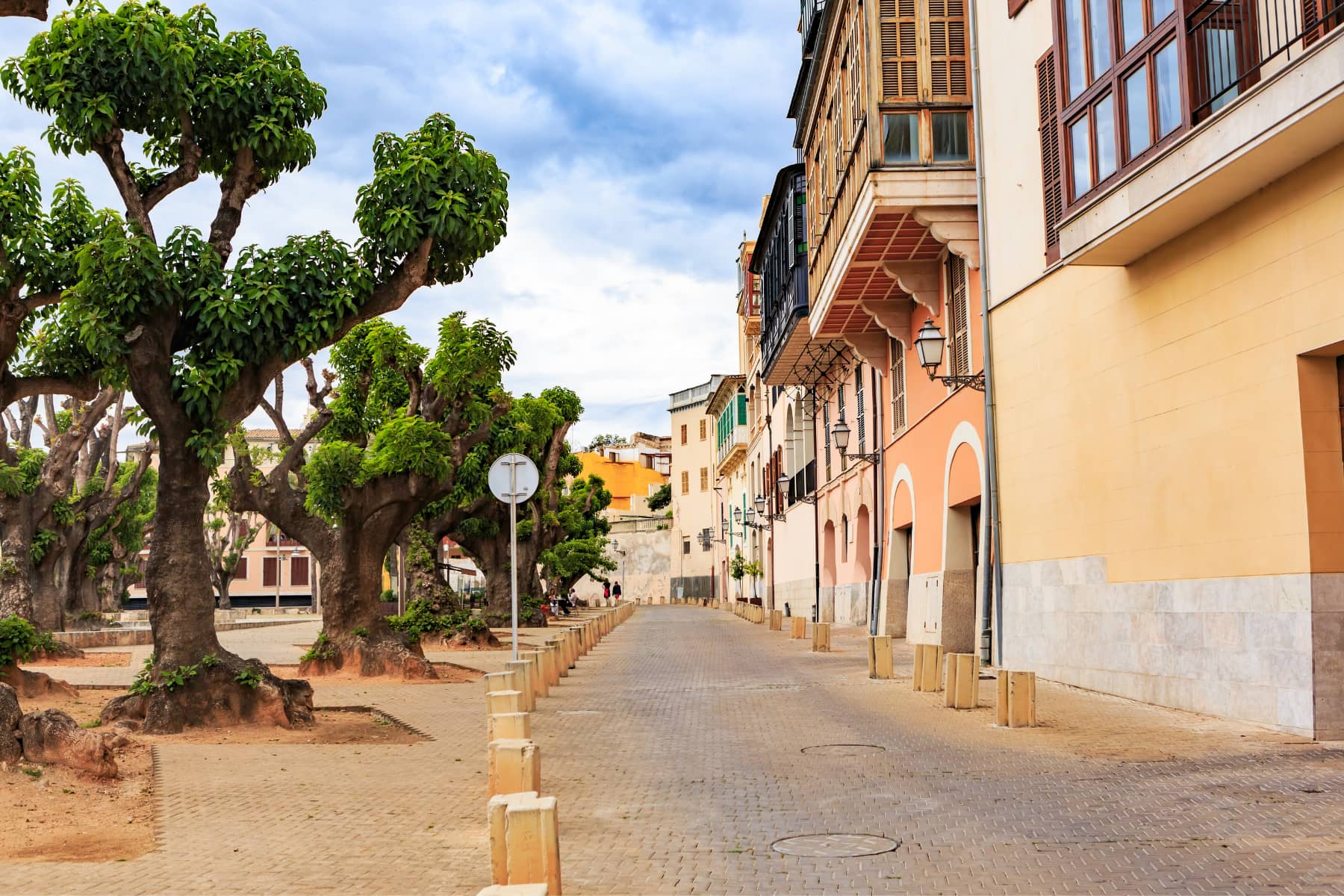
Avila
Out of the numerous Jewish communities in Spain, the Jewish Quarter of Avila plays a special role in the history of Spanish Jewish rights. The Jews of Avila were not subjected to a great deal of discriminatory behaviors unlike their brothers in other cities. They served the city as being distributors of fine clothing and other textiles. However, despite this good fortune, the Jewish quarter itself had not stood the test of time. There are few traces of this community but what has been remembered through documents and records has been identified and preserved. The Belforad Synagogue has been converted into a church, while the Lomos Synagogue is believed to be located at current Moses Rubí chapel, but it’s hard to know for sure. However, the latest victory has been the unearthing of the local medieval Jewish cemetery just outside the 11th century walls of the city!
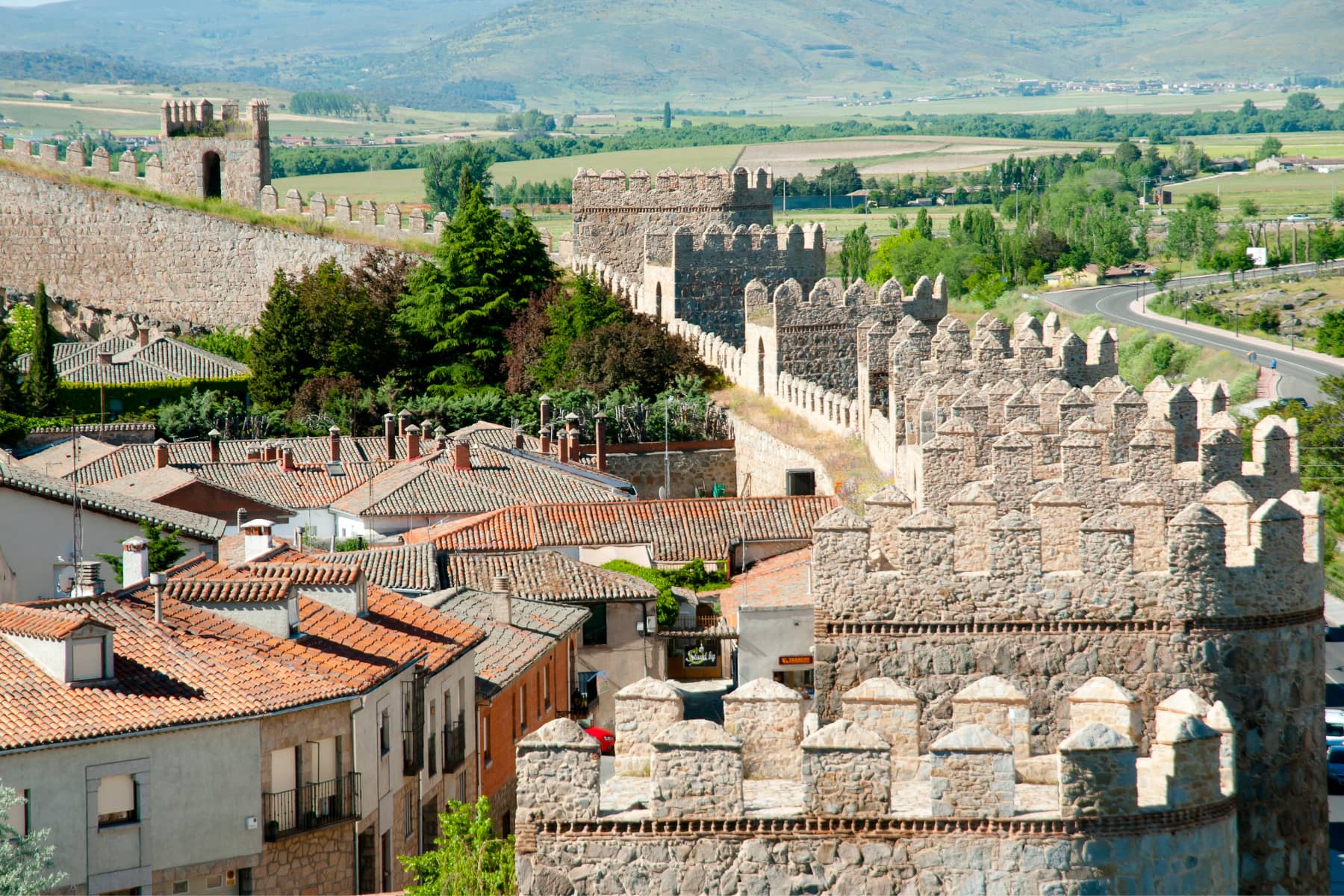
Madrid
Like most Jewish communities in Spain, their time to thrive came under Muslim leadership in the 10th century. Few traces remain of Jewish history but thanks to the records of Madrid’s historians, the outline of two historic Jewish quarters has since been located. The first quarter was evacuated after the Black Plague and the community was relocated to a new Juderia. The La Almudena Cathedral currently stands in its place. Of the several historic Jewish quarters in Spain Madrid has seen the most regrowth of modern Jewish life. Since 2008 the city of Madrid has celebrated the Hanukkah Festival of Lights, a festive day full of homage paying to Madrid’s past and the present Jewish community. The entire ceremony is a prime example of the new-found good faith and commitment to the future of Spain’s Jewish community.
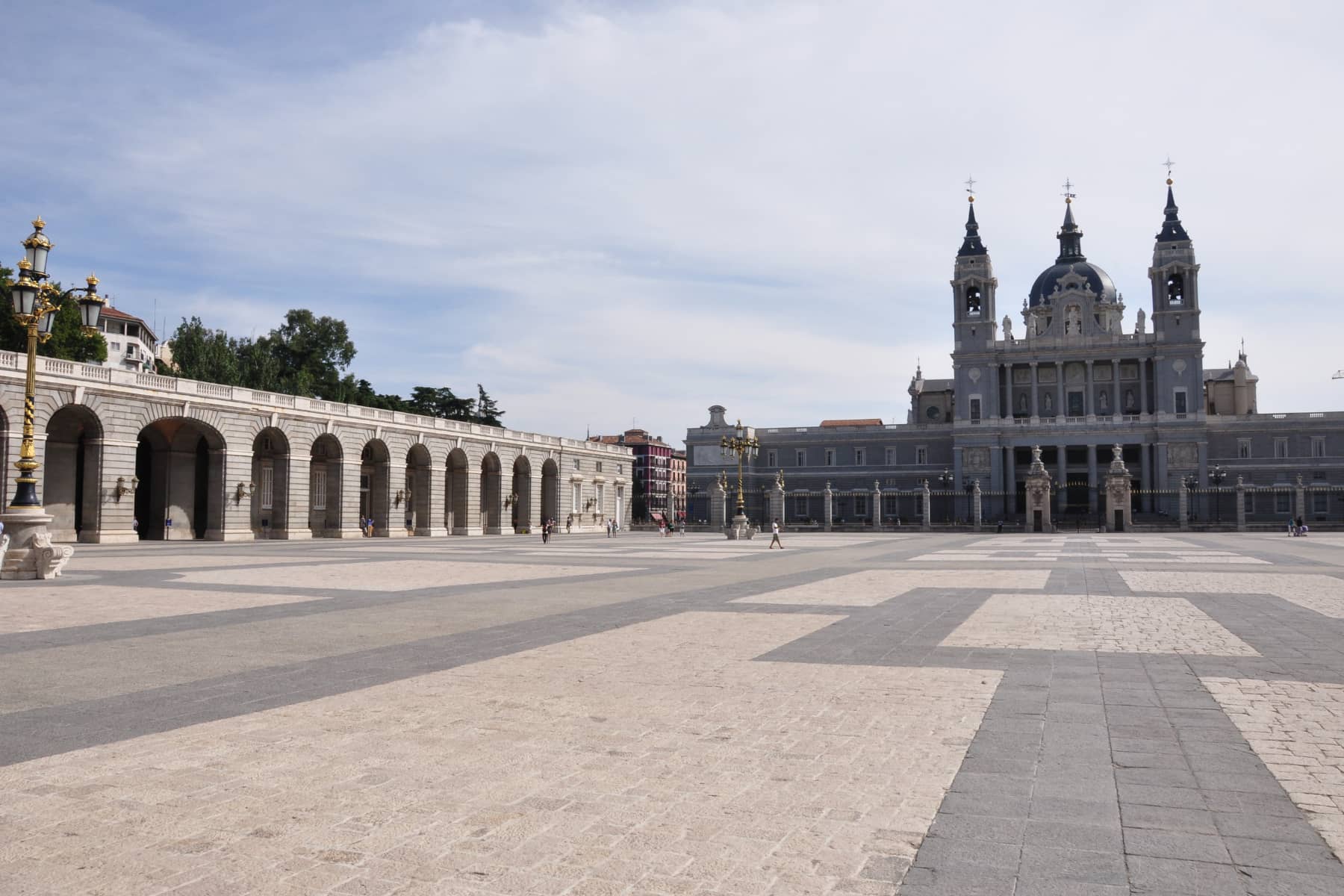
The Jewish Story of Ferrara, Italy
Ferrara is the only city in Emilia-Romagna to have an uninterrupted Jewish presence from the middle ages to the present. Although there are no references nor documents before the 13th century CE, Ferrara’s Jewish presence is said to date back to the distant past.
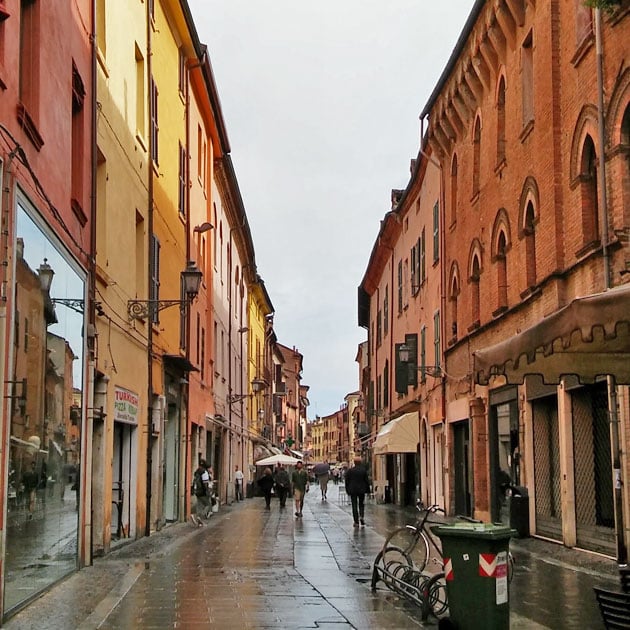
Under the Duchy of Este, the community enjoyed its finest years: the dukes offered shelter to refugees from Spain and Portugal after 1492 and from Eastern Europe. The city became a melting pot of different Jewish cultures, which not only lived together within the same Jewish context, but also embellished the city in which they lived with significant social and cultural contributions. Few Italian cities have preserved the feel of the Jewish memory, both distant and recent, as keenly as Ferrara. Going down the streets of the ghetto, still intact in its original layout, and entering the synagogues and museum, means exploring three centuries of history. Via Mazzini (formerly Contrada Sabbioni) was the main street in the ghetto.
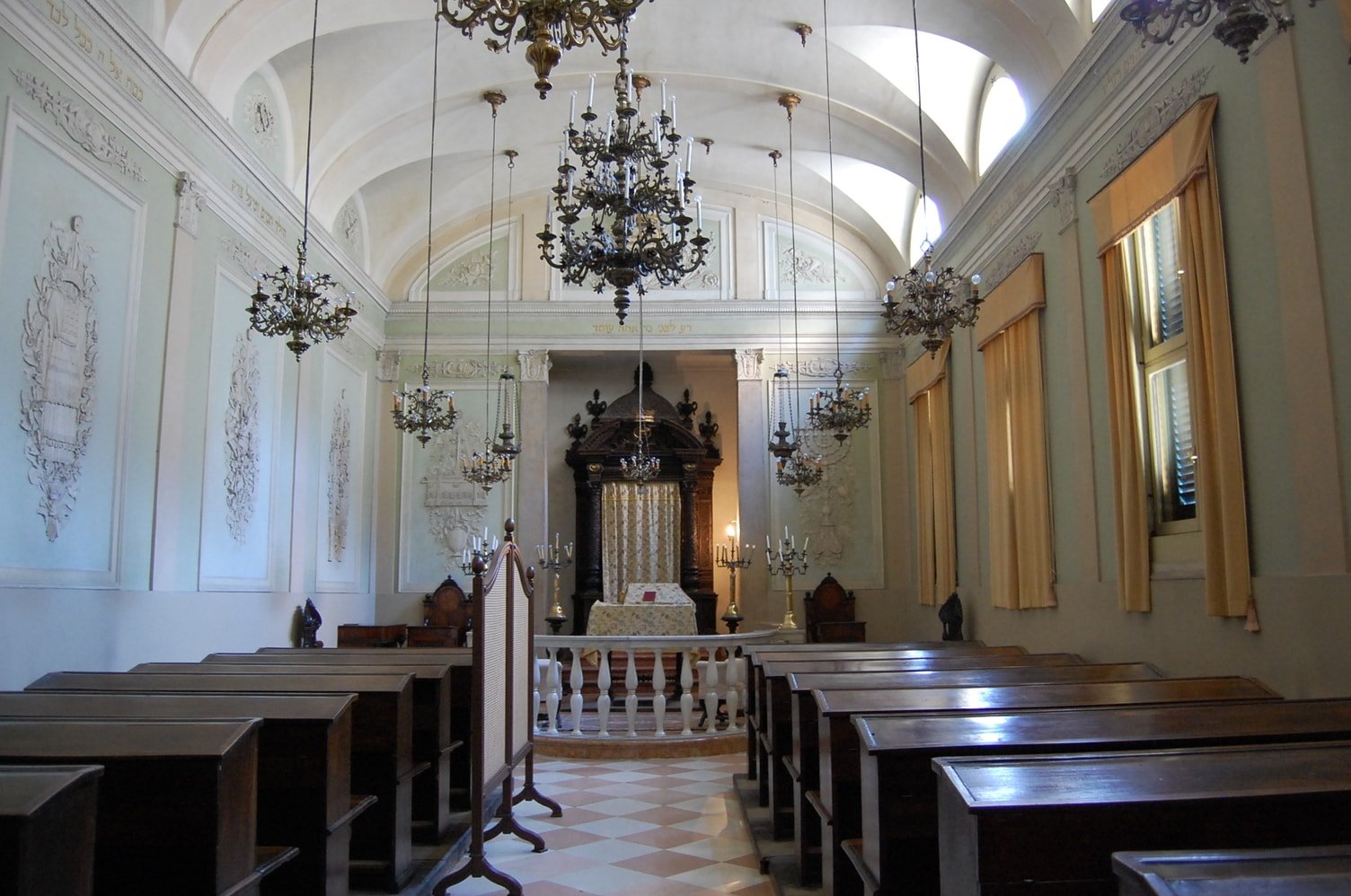
At the beginning of the street, behind the cathedral, in the oratory of San Crispino, from 1695 the Jews were forced to attend sermons which, according to the Church, would convince them to convert. The buildings were once linked by internal passages making it possible to reach the synagogues by going from one house to the other without having to enter the street. Some of these secret passages came to light again during recent restoration work. At the entrance to Via Mazzini you can still see the mark left by the hinges from one of the five ghetto gates. Now a pedestrian precinct, the street has a long backdrop of continuous buildings forming a single façade with ground-floor shops. Via Mazzini has always had a commercial character.
